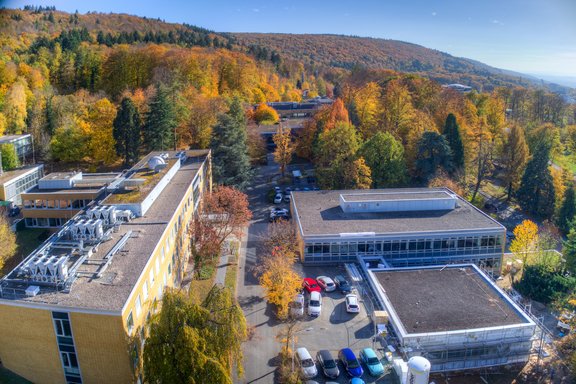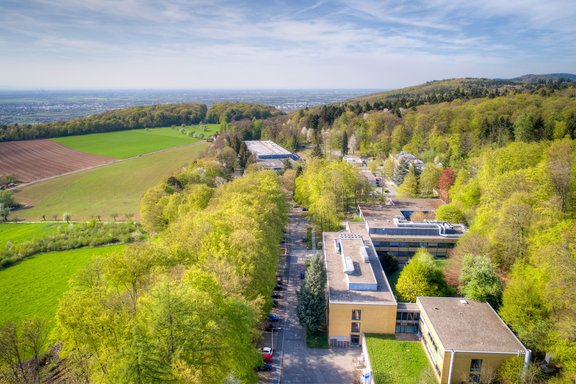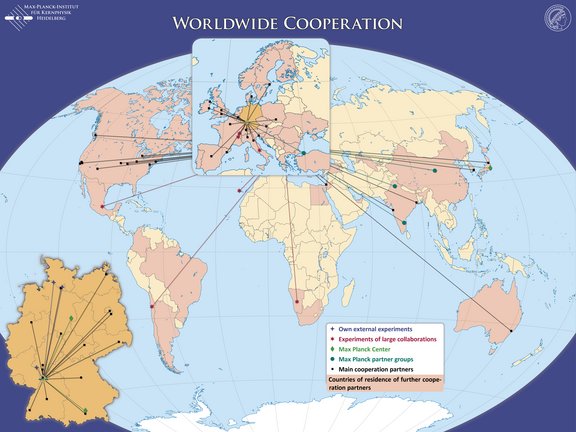The Max-Planck-Institut für Kernphysik (MPIK) is one out of 86 institutes and research establishments of the Max-Planck-Gesellschaft zur Förderung der Wissenschaften (MPG) (Max Planck Society for the Advancement of Science). The MPG was founded in 1948 as successor to the Kaiser-Wilhelm-Gesellschaft (established in 1911) and is committed to basic research. The MPIK was founded in 1958 under the leadership of Wolfgang Gentner. Its precursor was the Institute for Physics at the MPI for Medical Research led by Walther Bothe from 1934 to 1957. Since 1966 the MPIK is led by a board of directors. The initial scientific goals were basic research in nuclear physics and the application of nuclear-physics methods to questions concerning in the physics and chemistry of the cosmos. Today, the activities concentrate on the two interdisciplinary research fields
Astroparticle Physics (the Crossroads of Particle Physics and Astrophysics)
and
Quantum Dynamics (Dynamics of Atoms and Molecules).
Presently, the institute consists of five divisions and additionally several independent research groups mostly led by young physicists. Every day, about 400 persons are working at the Institute, including around 130 scientists and 110 PhD students. Scientists at the MPIK collaborate with other research groups from all over the world. They are involved in a large number of international collaborations, partly in a leading role. Particularly close connections exist to some large-scale facilities like GSI (Darmstadt), DESY (Hamburg), CERN (Genf), INFN-LNGS (Assergi L‘Aquila), LCLS (Stanford). In the local region, the Institute cooperates closely with Heidelberg University, where the directors and further members of the Institute are teaching. Three International Max Planck Research Schools (IMPRS) and a graduate school serve to foster young scientists.


